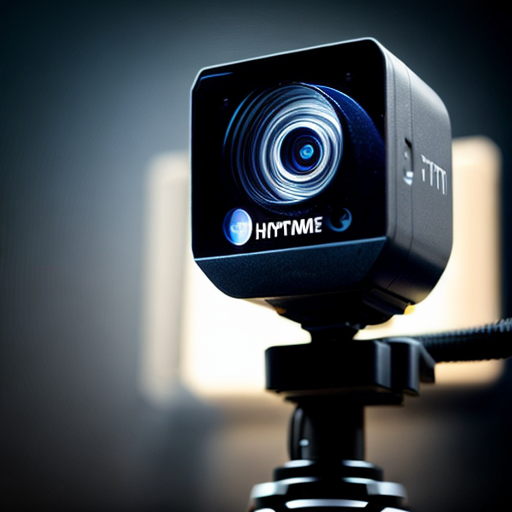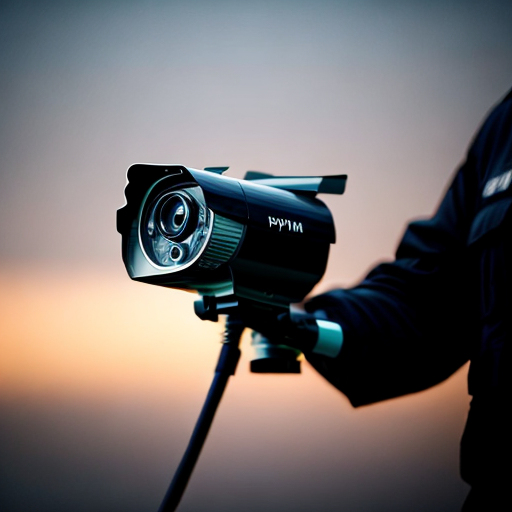Understanding the Basics of Home Security Camera Recording
Alright, folks, let's dive into the fascinating world of home security camera recording! Now, picture this: you're sipping your morning coffee, feeling all cozy and secure in your humble abode, when suddenly you wonder, 'How long do these sneaky cameras actually record?' Well, fear not, my friends, for I have the answer! Home security cameras typically record for a specific duration, depending on various factors like storage capacity, camera settings, and your own preferences. Some cameras may store footage for a week, while others can go for a month or even longer. So, whether you're a paranoid pet owner or just want to keep an eye on your cookie jar, rest assured that these trusty cameras have got your back, capturing all the action for as long as you need!
Factors Influencing the Duration of Home Security Camera Recording
An interesting fact about home security cameras is that the duration for which they can record varies depending on the type of camera and its storage capacity. Some cameras are designed to continuously record and overwrite old footage, allowing for weeks or even months of recording. However, with advancements in technology, some modern cameras now offer cloud storage options, enabling homeowners to store recorded footage for extended periods, sometimes up to 30 days or more. This not only provides a longer recording duration but also ensures that the footage is securely stored off-site, reducing the risk of tampering or loss in case of a break-in or damage to the camera.
Let's take a moment to unravel the mysterious factors that influence the duration of home security camera recording. First up, we have the resolution of the camera. Higher resolution means more detailed footage, but it also requires more storage space, potentially shortening the recording time. Next, we have the storage capacity itself. The larger the storage, the longer your camera can keep churning out those surveillance masterpieces. Additionally, the recording settings you choose play a role. Continuous recording may eat up storage faster, while motion-activated recording can stretch out the duration. Lastly, don't forget about your own preferences and needs. Are you a vigilant soul who wants weeks of footage, or are you content with a few days? Remember, my friends, understanding these factors will help you make informed decisions and ensure that your home security camera recording lasts as long as you desire!
Different Recording Modes and Their Impact on Storage Capacity

Let's embark on a journey through the intriguing realm of different recording modes and their impact on storage capacity when it comes to home security cameras. Buckle up, my friends, because we're about to dive deep into this fascinating topic!
First up, we have continuous recording mode. This mode is like a non-stop marathon for your camera, capturing every single moment within its field of view. While it provides comprehensive coverage, it can also eat up storage space faster than a kid devouring a bag of candy. So, if you opt for continuous recording, be prepared to have a robust storage capacity to accommodate the constant stream of footage.
Next, we have motion-activated recording mode. This clever mode only starts recording when it detects movement within its range. It's like having a camera that's always on the lookout for suspicious activity. By only capturing moments of action, motion-activated recording can significantly extend the duration of your storage. So, if you're not interested in hours of footage of your sleeping cat, this mode might be your best bet.
Another popular recording mode is scheduled recording. With this mode, you have the power to set specific time frames for your camera to record. Whether it's during the night when you're fast asleep or when you're away from home, scheduled recording allows you to tailor your surveillance to your needs. By limiting the recording time to specific periods, you can conserve storage capacity and ensure you capture the moments that matter most.
Last but not least, we have event-triggered recording mode. This mode is like having a camera that's always on standby, waiting for something significant to happen. It can be triggered by various events, such as a door opening or a window breaking. By focusing on specific events, this mode maximizes storage efficiency, ensuring that you have ample space for those critical moments that require your attention.
In conclusion, different recording modes have a significant impact on the storage capacity of home security cameras. Whether you choose continuous recording, motion-activated recording, scheduled recording, or event-triggered recording, it's essential to consider your storage capacity and the duration of footage you desire. So, my friends, choose wisely, and may your home security camera recording be as long-lasting as your favorite pair of socks!
Extending Recording Time: Tips and Strategies for Maximizing Home Security Camera Storage
Fun fact: Did you know that most home security cameras are designed to continuously record footage for an extended period of time? Depending on the storage capacity and settings, some cameras can record and store footage for up to several weeks or even months without interruption. So, whether you're away on vacation or simply want to keep an eye on your property, you can rest assured that your home security camera has got you covered!
Let's uncover some tips and strategies to extend the recording time of your home security camera and maximize your storage capacity. First off, consider adjusting the camera's resolution. Lowering the resolution can reduce the file size of each recording, allowing you to store more footage. Additionally, explore the option of using motion detection zones. By focusing the camera's attention on specific areas where movement is most likely to occur, you can minimize unnecessary recordings and conserve storage space. Another helpful strategy is to set up a recording schedule that aligns with your needs. If you're away from home during certain hours, schedule the camera to record only during those times, optimizing storage usage. Lastly, consider investing in additional storage options, such as cloud storage or external hard drives. These can provide extra space for your recordings, ensuring that you have ample storage capacity for an extended period. So, my friends, with these tips in your arsenal, you can make the most of your home security camera's storage and keep those recordings rolling for as long as you need!

